- Local time
- Today, 10:25
- Joined
- Jan 5, 2006
- Messages
- 54,114
- Points
- 1,327
- First Name
- Dave
- My Ride
- Speedmaster
- Riding Since
- 1974
Republished from December 2018 (price guide now sketchy!)
DO YOU ever wish you’d been alive in those times when great classic bikes were selling cheap? You know what we mean — those times when no-one wanted Norton Commandos because of the Z1, those times when Brough Superiors were being retired because they were considered obsolete, those times when people were selling their mid-70s Ducati 900SS because they didn’t have electrics starters. Well, here’s the thing. You are alive in one of those times. Every generation has its classics and, for a period of time, they are affordable. Here’s our tips on investing in classic bikes, and our Top Ten Future Classics you can buy today for ten grand or less.
Start shopping with some logical ground rules
There are no rules in investing in motorbikes. If there were, it would be easy. But we reckon there are some basics that have enough logic to be considered worthwhile.
 Tip 1. If it wasn’t desirable yesterday, it won’t be desirable tomorrow
Tip 1. If it wasn’t desirable yesterday, it won’t be desirable tomorrow
We consider this a no-brainer — you’d be brave to risk money on a bike that no-one liked very much even when it was new. The Vincent Black Shadow has always been highly sought after. That’s because they were magnificent machines. They were also very, very exclusive (and expensive), even when they were new — so there were countless folks who couldn’t afford one but who wished that, one day, they would own one.
Tip 2. Originality is king 
When collectors scan the world in search of bikes, they have ‘originality’ as a high-level search filter. The original ‘look’ is most important — correct colour, correct exhaust, correct seat, correct badges, correct gauges; all the things you can see — so a potential buyer can feel like they’re buying the same bike they could have bought (but probably couldn’t afford) back in the day. If all those items are not only correct but original (tank never repainted, engine never rebuilt etc), that’s even better. (We got to see a collection of Japanese bikes recently, where the owner did ‘originality’ better than most. See our story here.)
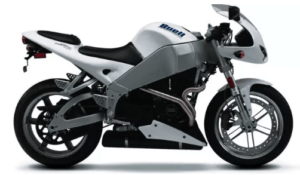 Tip 3. First and last are remembered most fondly
Tip 3. First and last are remembered most fondly
Ground-breaking bikes that set a new standard in performance, handling and styling will always be valued, because they stick in people’s memories. But they’ve got to be outstanding — revolutionary, not just evolutionary. The first Z1 Kawasaki was not as good a bike as any of the Zeds that came after it, but it’s the one that everyone remembers and now it’s the one that everyone wants. At the other end of the evolutionary chain, those final big-bore two-strokes (Suzuki RG 500s etc) tick the opposite box — highly evolved dinosaurs that mark the high-point for a time or technology.
Tip 4. Remember your high school economics — price is a product of supply and demand 
We reckon the best buys in the second-hand bike market at the moment are high-performance Japanese sports bikes. Honda CBR1000RRs, Yamaha R1s, Suzuki GSXRs, and Kawasaki ZX10RRs can be found for not much more than beer money, and they are among the most highly advanced motorcycles ever made. Crazy fast, sweet handling, beautifully made, reliable — just marvellous pieces of kit. But we don’t recommend them as investments. Do you know why they are so cheap? Because they lack rarity. There’s an over-supply of them. They will probably go up in value eventually, but not until most of them (and probably most of us) are dead and buried. And given how many of them were made (like us), and how well they were made (unlike us), that could be a long wait.
 Tip 5. Most collectibles spend time out of fashion
Tip 5. Most collectibles spend time out of fashion
If you like the idea of investing in motorcycles and you’ve not already read our story about the collector named Toad, you should. (See it here.) Toad has shown the world that a bike’s desirability is a transient thing. When bikes are new, people value them because of their newness. As soon as one model is made redundant by a newer model, the older one loses its newness and becomes less wanted. Once a bike is four or five models old, most people are turning up their noses. In the early 1970s when Japanese bikes were all the rage, people were riding their tired old British bikes to the rubbish tip and then hitching a ride home. Toad took his trailer to the tip every weekend and scooped up all the all bikes that no-one wanted. At the time, we’re sure people thought he was crazy as a loon. The man was a genius. You’re not going to find many bikes on rubbish tips any more, but you can use Toad’s logic to go shopping.
Tip 6. Yesterday’s buyers are tomorrow’s buyers 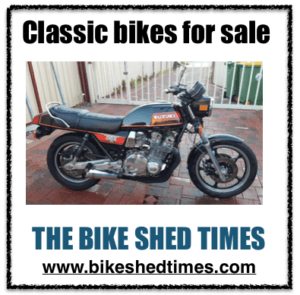
Remember when Volkswagen released the modern incarnation of the VW Beetle? We do. If we remember right, there was a line in the press from someone at VW headquarters saying that the company believed the typical ‘new Beetle’ buyer would be someone who owned a Beetle back in the old days. Not the same type of people — not the same generic — the same actual people. That logic also applies to Kawasaki’s new Z900 and Suzuki’s new Katana — they’re chasing the same actual people who bought Z1s in the 70s and Katanas in the ’80s, but who are now older, wiser, softer and richer. But there’s another group of buyers too — people who don’t want a modern incarnation of their old bike, but who actually want that old bike. We recently sold two 1988 Moto Guzzi LeMan 1000s to two chaps in their 50s, both of whom had owned a LeMans when they were in their 20s, for about the same price as they sold when they were new. People who want to re-live an enjoyable time of their lives will connect with a machine that was a part of that time. And they’ll pay for it.
 Tip 7. Yesterday’s wannabes are tomorrow’s buyers
Tip 7. Yesterday’s wannabes are tomorrow’s buyers
OK, so this is a car story. But we think the lesson is good. A few years ago, I bought a 1988 Porsche 911. When I was in my 20s, a new Porsche 911 cost as much as a house. And no, I’m not exaggerating. And then one day in my mid-40s I had a golly-gosh moment — I discovered that the very car that I had lusted over when I was 26 now cost less than a new Mazda 6. So I bought one. I paid $30,000 for it, which was a hell of a lot of money for a 25-year-old car (try pricing a 1988 Mazda) but a hell of a lot less (by $100k or so) than it cost back in the day. I was over the moon. Unlike the ‘new Beetle’ buyer who wanted a modern version of their old clunker, or the two Guzzi buyers who wanted to remember an old bike flame, I got to be the dorky guy from high school with zits who finally got to date the cheerleader with the long legs. In the years between 1988 and 2013, the price of a 1988 Porsche had come down (a lot) and my buying capacity had gone up (a bit). It was enough. The footnote to this story is that I have since sold the 911 for more than double what I paid for it. Some richer folks than me had that same golly-gosh moment, and made me an offer I couldn’t refuse. (Fear not, I’ve spent the profit wisely …)
Tip 8. Depreciation is linear. Except when it isn’t. 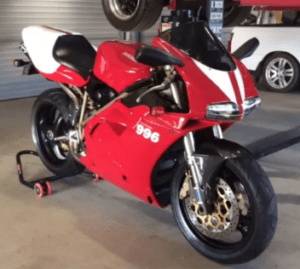
Ask any accountant and they’ll probably tell you that your motorbike will depreciate at a linear 20 per cent per annum. That means, according to the accountant, that if your new bike is worth $10,000 the day you buy it, it will be worth $8,000 ($10,000 minus $2,000) a year later. The following year it will be worth $6,400 ($8,000 minus $1,600) and the year after that it will be worth $4,200 ($6,400 minus $1,200). Sadly, the accountant is correct — or at least correct-ish — most of the time. But not all of the time. Sometimes the market interrupts the neat world of the accountant and decides that a bike is not depreciating so fast. Or not depreciating at all. Or, occasioanlly, appreciating. The successful motorcycle investor is the person who can predict (before everyone else does) that a particular model is going to upset the depreciation model and head in the opposite direction.

What does it all mean?
We have no idea. Really, we don’t. Investing in bikes is a risky business, and for every I-made-a-lot-of-money-on-an-old-Honda story there are a hundred I-lost-a-lot-of-money-on-an-old-Honda stories. But nonetheless, we are brave enough to name our Top Ten $10,000-or-less bikes that we believe are going to appreciate in the medium-to-long term, or at least hold their value, rather than slide into the swamp. And here they are:
#10: Early Yamaha RD350
#10: Early Yamaha RD350

While most of the world was going ga-ga over Japan’s four-cylinder superbikes in the early 1970s, Yamaha’s RD350 proved you could do a lot with a little. The diminutive twin-cylinder two-stroke embarrassed many a big bike, not only around the corners but even down the straight. The RD line included the wonderful RD400 Daytona and evolved into marvellous liquid-cooled LC350s, but it’s the earlier air-cooled 350s that most of us recall with the greatest fondness. Early RDs are already collectibles, but they’re still cheap. We reckon they still have upside. (Also consider: RD250, RD400.)
#9: 1981 Suzuki GSX1100S Katana
#9: 1981 Suzuki GSX1100S Katana

Designed by a German for a Japanese company to conquer the world, the Katana arrived to a market that loved the futuristic styling and gave Suzuki a huge image boost. (Also consider: Katana 750.)
#8: 1987 Moto Guzzi LeMans 1000
#8: 1987 Moto Guzzi LeMans 1000

Original LeMans 850s are now commanding big prices, but the later 1000cc MkV can still be found around the $10k mark. (Also consider: LeMans MkII, MkIII, MkIV). More reading here.
#7: 2000 Honda VTR1000 SP-1
#7: 2000 Honda VTR1000 SP-1

For our money, the SP variants of Honda’s VTR1000 are among the most collectible sports bikes to ever come out of Japan. The SP1 was created because Honda wanted a bike to beat Ducati in the world superbike series and, in typical Honda fashion, the bike did precisely that with Colin Edwards behind the bars. The SP1 was perfect on the track but a bit of a handful on the road — the fuelling was dodgy at low revs (not a problem at Eastern Creek, but a pain in the arse tootling around town) and the suspension and setup was hard as. (Also consider: The later VTR SP-2, and the four-cylinder VF1000R.)

#6: 1998 Ducati 996
#6: 1998 Ducati 996
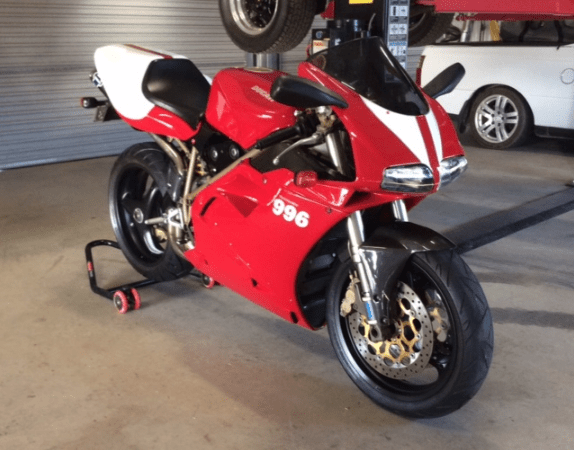
Spawned from the ground-breaking 916, the 996 has now slipped in value to the point where you can pick one up around $10,000. We have. And you should too. Well-heeled collectors will prefer the 916 of course, but they’ll pay more. For the rest of us, the 996 is a bargain. (Also consider: any late L-twin Ducati sports bike, but especially the 916, 998 and Panigale.) More reading here.
#5: Maico 490
#5: Maico 490
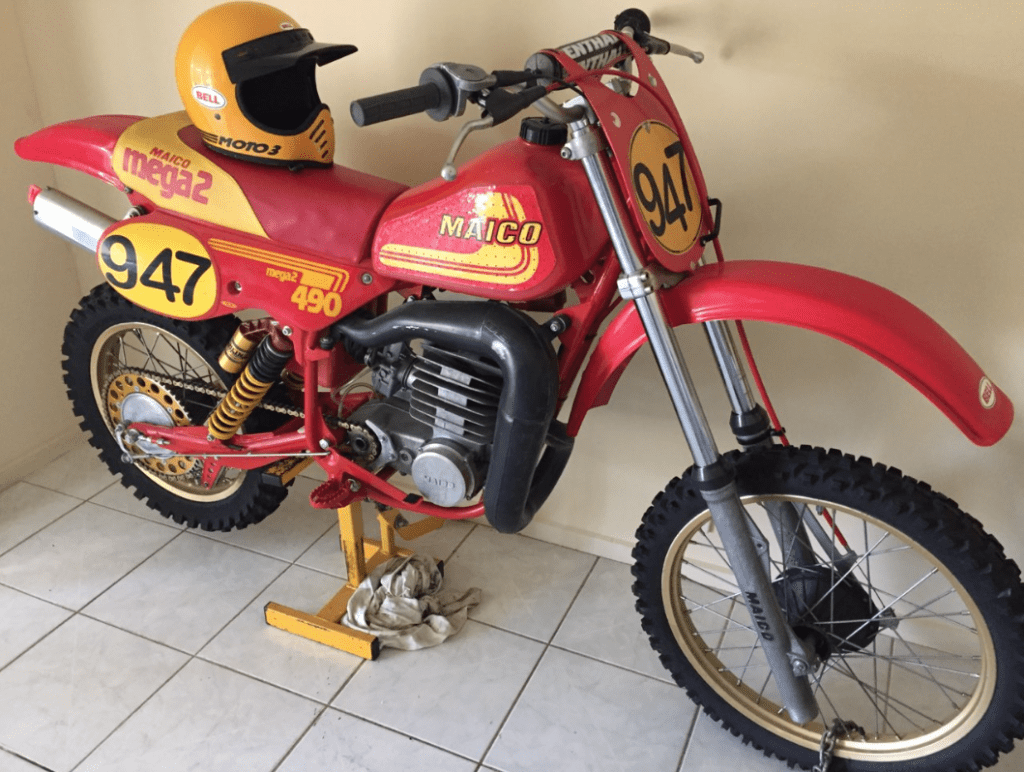
We weren’t going to include dirt bikes in this line-up, but we simply couldn’t ignore this one. If Elvis Presley were a dirt bike, he would be a Maico 490. It’s simply The King. Maico made the best motocross bikes in the world through the 1970s and into the 1980s, and the 490 in its various guises was the pinnacle of the company’s success. Not long after the 490 hit the world’s race tracks, the company went broke. And that was that. All over. A tragedy that makes Romeo and Juliet look like a sit-com. (Also consider: Anything with a Maico badge; other big-bore European motocrossers. We could never find a big Maico when we had cash, so we bought and restored a 1983 Husqvarna 430 instead. It was fun. See the story here.)
#4: MV Agusta F4 750
#4: MV Agusta F4 750

More than a decade after the original MV Agusta empire collapsed, Italian brothers Claudio and Gianfranco Castiglioni (of Cagiva fame) were collecting the remnants of Italy’s once-great marques. They bought the rights to the MV Agusta name in 1991. Their first bikes under the reincarnated MV Agusta badge came in 1997 – a small range of fast, light, exotic, expensive, four-cylinder 750cc sports bikes called the F4. The range expanded in the early 2000s to include 1000cc variants of the F4, and the first of the Brutale series, a 750. The Brutale 910 arrived in 2006, and the higher-spec 910R followed a year later. The Bike Shed Times editor Peter Terlick bought himself a 910R (see the story here), but it’s the original 750F4 that he’d love to own, and its the one we think will make money for investors. (Also consider: Any four-cylinder MV Agusta — they’re all rare and exotic.)
#3: 1999 Suzuki GSX1300R Hayabusa
#3: 1999 Suzuki GSX1300R Hayabusa

 In 1999, the world was given it’s first 300kmh+ production motorcycle. The first Suzuki Hayabusa sparked a global panic about the speed-and-horsepower race getting out of hand, to the point that politicians started talking openly about banning the sale of hyper-fast bikes. Manufacturers responded by implementing an unwritten agreement to put speed limiters on bikes so they could not exceed 300kmh. The agreement was more about posturing than safety, and there are plenty of bikes out there nowadays that can top 300kmh. (Well, maybe not plenty — but some.) But none of that changes the fact that the first Hayabusa owns an important and impressive place in history. (Also consider: MV Agusta’s 312RR, which openly and proudly claimed a top speed of 312kmh when everyone else was diving for cover. You won’t find one for ten grand, though …) More reading here.
In 1999, the world was given it’s first 300kmh+ production motorcycle. The first Suzuki Hayabusa sparked a global panic about the speed-and-horsepower race getting out of hand, to the point that politicians started talking openly about banning the sale of hyper-fast bikes. Manufacturers responded by implementing an unwritten agreement to put speed limiters on bikes so they could not exceed 300kmh. The agreement was more about posturing than safety, and there are plenty of bikes out there nowadays that can top 300kmh. (Well, maybe not plenty — but some.) But none of that changes the fact that the first Hayabusa owns an important and impressive place in history. (Also consider: MV Agusta’s 312RR, which openly and proudly claimed a top speed of 312kmh when everyone else was diving for cover. You won’t find one for ten grand, though …) More reading here.#2: 2002 Buell Firebolt XB9R
#2: 2002 Buell Firebolt XB9R
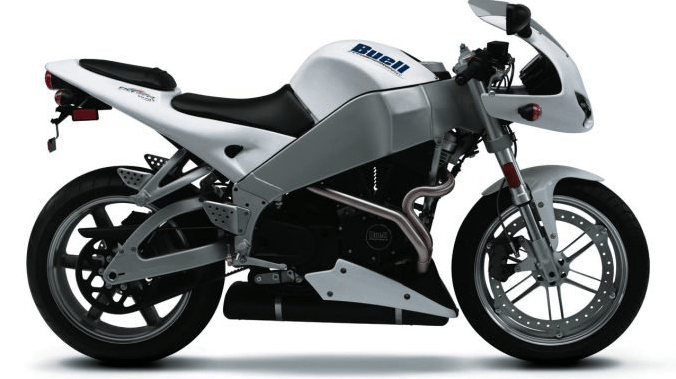
Almost as tragic as the story of Maico is the story of Buell. Erik Buell was an engineer who worked for Harley-Davidson and dreamed of making a Harley sports bike. Not a chopper pretending to be a sportsbike, like the H-D Sportster, but an actual sports bike that you could take to the hills and whup your mates or even take to the race track and win races on. The first Buell Firebolt, the XB9R, was the realisation of Erik’s dream. Harley-Davidson were amused, then threatened, then supposedly supportive of Erik and his revolutionary bikes, then they bought him out and shut him down. We desperately want one of these in our shed. (Update: And now we’ve got one!)
#1: SOHC Honda 750 Four
#1: SOHC Honda 750 Four

So this is it — our top pick of the best investment bikes you can buy today with a budget of no more than $10,000. When Honda released the 750 Four in 1969, the motorcycle world changed. Although the bike was barely faster than the Triumph Trident and Norton 850 Commando, it was considered a quantum leap forward in design and technology. It’s four-cylinder engine, disc brakes and in-your-face styling were important, but it’s smoothness, reliability and build quality were really the more important issues. The British bike industry was already in deep trouble in the late ’60s, and the Honda Four arrived like a killer punch. You’re not likely to find a first series (K0) model under ten grand in reasonable shape, but you should be able to pick up one of the later single overhead cam models for that sort of money. (We know a chap who paid a lot more for an early K0 built entirely from NOS parts. Read about him here.) (Also consider: Kawasaki Z900, DOHC Honda Four).
The post Investing in classic motorcycles -- our Top Ten bikes and how to pick your winner first appeared on The Bike Shed Times.
Continue reading...


